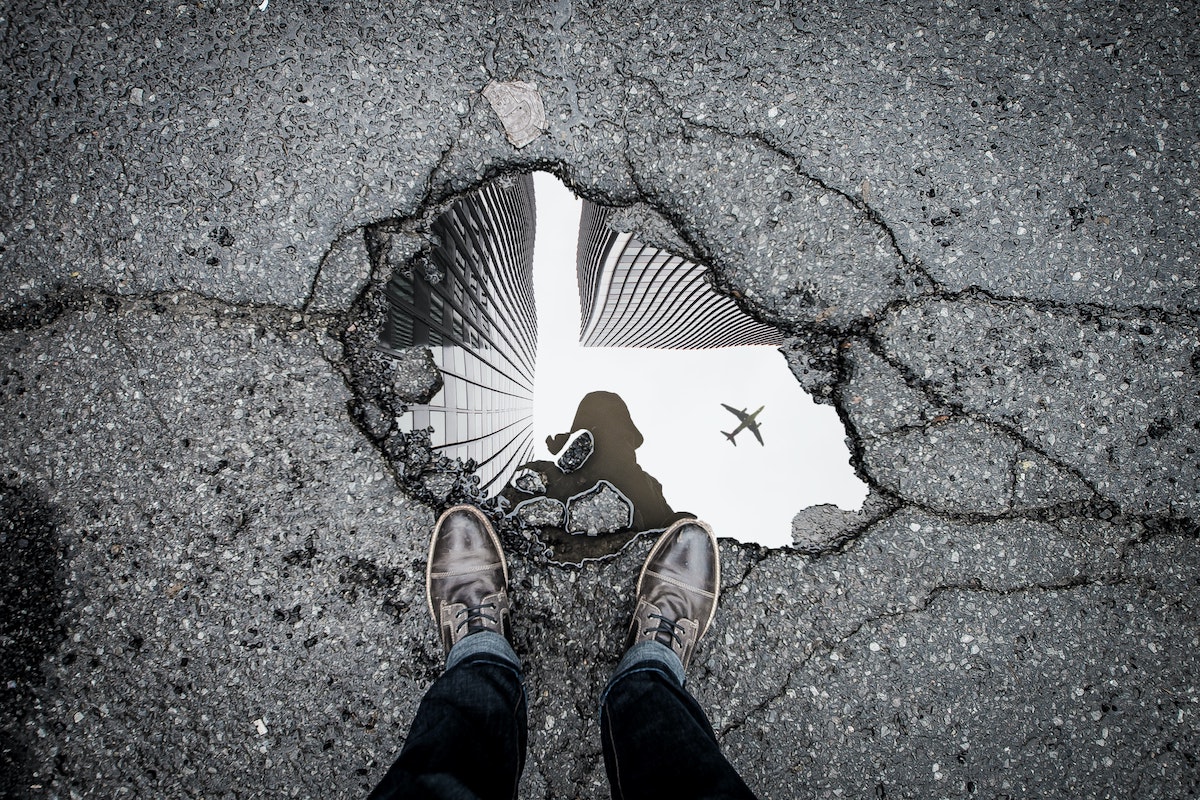 Maths, Physics & Chemistry
Maths, Physics & Chemistry
Using the quantum properties of atoms to reveal what's underground
In the 300 years since Newton’s apple, gravity sensors have emerged as a useful tool to investigate the underground, looking for hazards and even mapping the distribution of water from space. Using the quantum properties of atoms, a new sensor has been made that overcomes several practical limitations of gravity survey, with the potential to speed up future surveys.

- The interplay between depth of investigation and the size of detectable targets (i.e. the deeper the target, the more difficult it is to detect)
- the confounding effects of noise or additional signals from the site environment
- the challenge of getting signals from the surface to reach deep targets through the ground which weakens them as they travel through it.
One of the most promising techniques for deeper targets is microgravity which makes accurate measurements of the gravitational acceleration, detecting the force that exists between any two masses. This enables a map to be created which gives insight into the subsurface density. The main advantage of the technique is that it measures the density of the ground without the need to inject a signal through it, removing the third limitation. Instruments for measuring gravity are strongly affected by vibrations, which are indistinguishable from gravity through the laws of physics. These arise from natural seismic activity and human activity such as road traffic and construction work, and can only be mitigated by measuring for a long time and averaging the resulting signal. Here we use quantum physics to overcome this issue and develop a new generation of gravity sensors.
The instrument addresses these problems by exploiting the quantum properties of rubidium atoms in order to measure gravity gradients in an outdoor environment. The instrument works by using two atom interferometers to measure the gravity gradient, separated vertically by one metre. Each atom interferometer performs a measurement by trapping a cloud of atoms and laser cooling them to a fraction above absolute zero. This cloud of atoms is then allowed to fall under gravity. As the cloud falls a laser beam is used to put the atoms into a quantum superposition of energy and momentum states. As the clouds fall further laser beams are used to direct and interfere the atoms. After which the state of the atoms in each cloud is measured. By looking at the difference between the two interferometers, we can obtain the value of the gravity gradient.
In addition to being able to measure gravity gradients, as the instrument takes measurements at two different heights simultaneously using the same laser beam the vibrations experienced by the top and bottom interferometers are the same. As the noise is common to both, it is removed and the noise which usually limits a gravimeter is removed. This means the new sensor is no longer limited by environmental noise but only its own internal noise, giving the potential to measure quicker and make gravity surveys more practical. This advantage offers a revolution not only in the speed at which we can take measurements, but also the size and depth of detectable features or the spatial resolution of surveys. Unlike sensors designed for the laboratory, our instrument was also shown to be robust to field conditions which would usually affect laboratory systems of the same type, for example variations in the temperature and magnetic fields which occur in site conditions.
We demonstrated the utility of the sensor by using it to perform a survey over a buried tunnel in an outdoor environment. We detected a decrease in the gravity gradient signal over the tunnel. The size of this decrease was consistent with the expected size of the signal based on a model of the signal size based on the tunnel dimensions and previous measurements with other instruments. The sensor was able to locate the center of the tunnel to within 20 cm along the survey line.
This instrument is the first of a new generation of fieldable quantum technology-based gravity gradient sensors. Further improvements in robustness and sensitivity could enable sensors that can more rapidly scan an area, allowing an unprecedented understanding of what lies beneath our feet. This could provide new insight and tools to help us to uncover history and reduce risks in construction projects and use of brownfield sites.
Original Article:
Next read: Heading underground with cold atoms by Jamie Vovrosh , Sam Hedges , Farzad Hayati
Edited by:
Dr. Kala Kaspar , Associate Editor
We thought you might like
Taking off with quantum sensors on unstaffed aerial vehicles
Oct 13, 2023 in Maths, Physics & Chemistry | 3 min read by Jamie Vovrosh , Farzad HayatiMore from Maths, Physics & Chemistry
Testing gravity through the distortion of time
Sep 20, 2024 in Maths, Physics & Chemistry | 3 min read by Sveva CastelloStacking molecular chips in multiple dimensions
Aug 30, 2024 in Maths, Physics & Chemistry | 3 min read by Lucía Gallego , Romain Jamagne , Michel RickhausReversible Anticoagulants: Inspired by Nature, Designed for Safety
Jun 12, 2024 in Maths, Physics & Chemistry | 4 min read by Millicent Dockerill , Nicolas WinssingerDistance-preserving moves always keep a point fixed
May 18, 2024 in Maths, Physics & Chemistry | 4 min read by Shaula FiorelliA resonance triggers chemical reactions between the coldest molecules
Apr 5, 2024 in Maths, Physics & Chemistry | 3 min read by Juliana Park , Wonyl ChoiEditor's picks
Trending now
Popular topics


